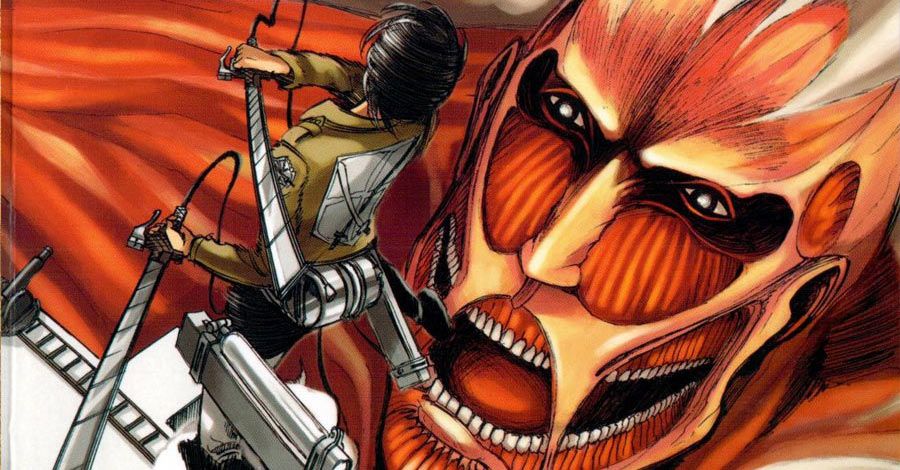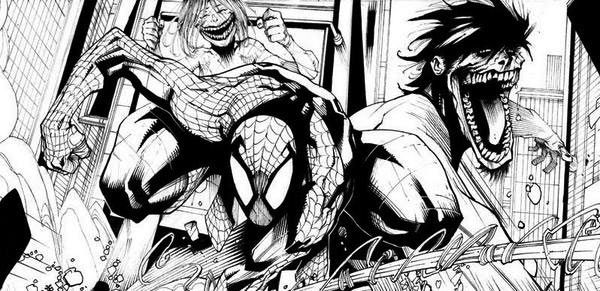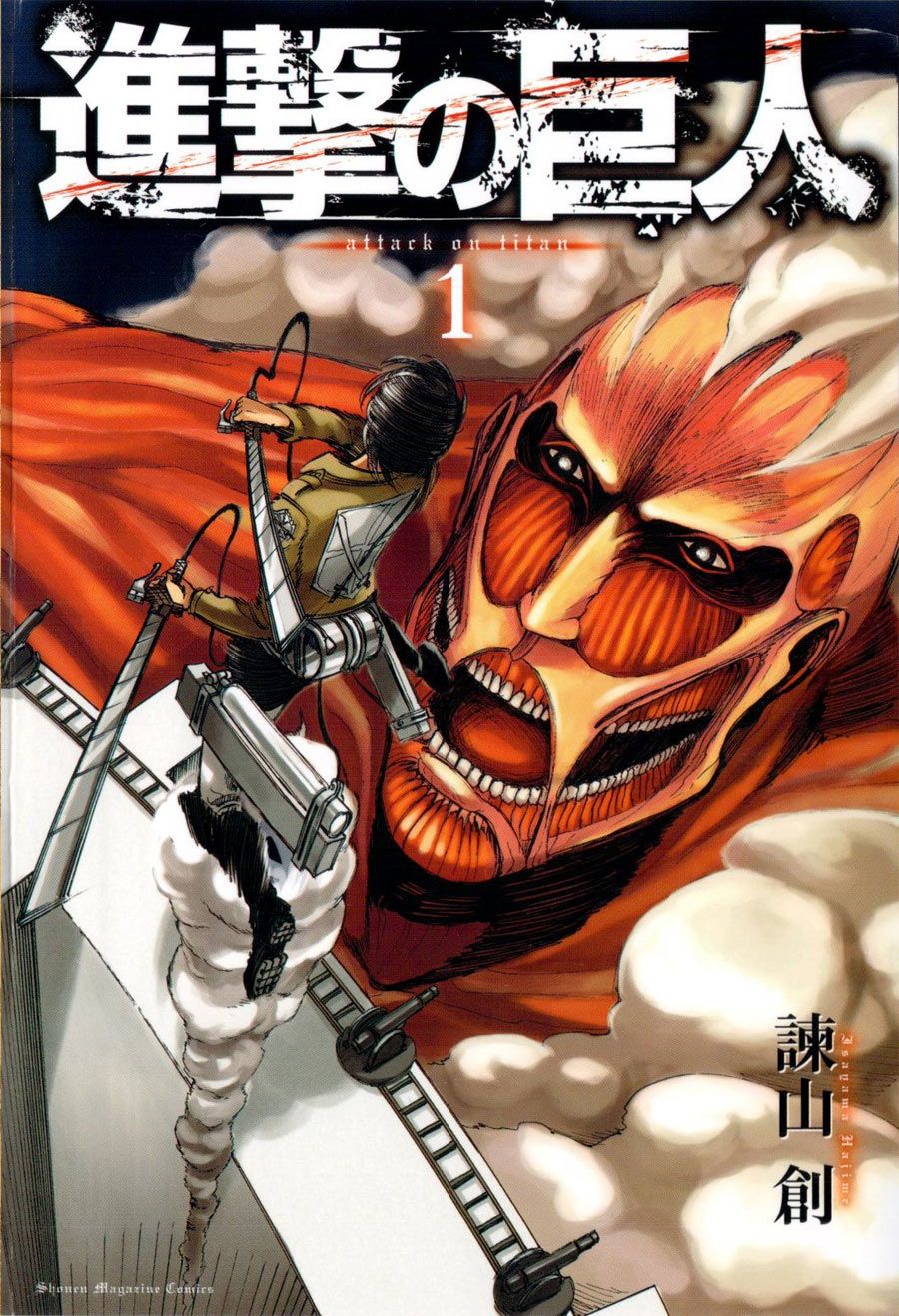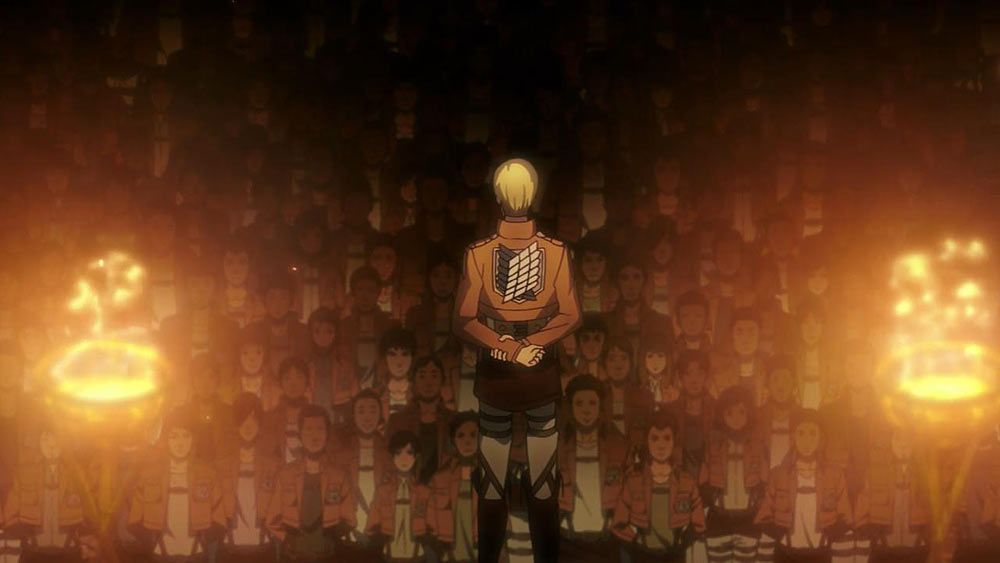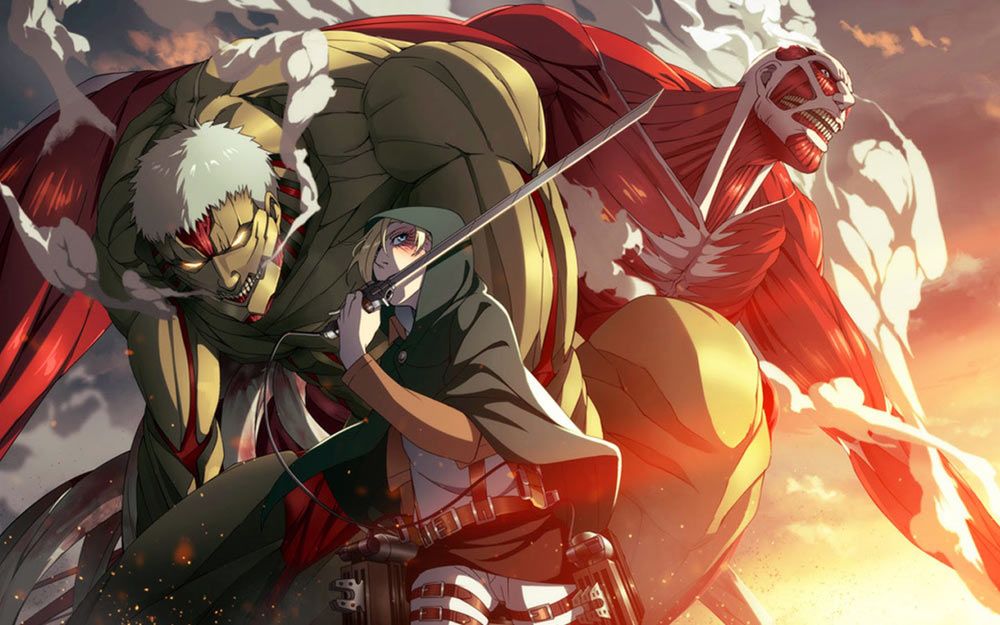With the 1994 release of "Archie Meets the Punisher," Marvel proved that there were obviously no limits to the crossovers the House of Ideas will consider. But when it was announced that the Avengers would be assembling for an "Attack on Titan" story, fans of both properties were caught by surprise.
With little fanfare, C.B. Cebulski, Marvel Comics' senior vice president of international business development, made the official announcement via his personal Twitter account on Nov. 3. "Not a joke, folks. Attack on Titan and the @Marvel universe are crossing over! In 2 weeks. In Japan." The tweet also included a teaser image featuring Spider-Man web-swinging away from two the best-selling manga's Titans, further setting off the imaginations of fans of both franchises.
RELATED: Marvel/"Attack on Titan" Story Also Features Guardians of the Galaxy
"Brutus," a Japanese magazine devoted to pop culture, lifestyle and culture in Tokyo, Japan, actually posted news of the crossover two days earlier on its website. The post (thanks to Google Translate) indicates that the story will appear in "Brutus" No. 790 and will feature The Avengers battling a giant female Titan from "Attack on Titan" on the streets of New York. A subsequent post featured new artwork by "Guardians 3000" artist Gerardo Sandoval, and earlier today, a photo from the issue made its way online, revealing the Guardians of the Galaxy are also involved in the adventure, plotted by "Attack" creator Hajime Isayama himself.
But what is a Titan, exactly? And more importantly, what's "Attack on Titan?"
For the uninitiated, CBR News has compiled a basic "Attack on Titan" primer so that readers are ready for the epic inter-company confrontation, and set to dive right into the original manga, translated into English by Kodansha Comics. Be warned: Spoilers lie ahead!
Isayama on the Attack
"Attack on Titan" is the brainchild of Hajime Isayama, a 28-year old manga artist from Hita, Japan. A newcomer on the scene, this is Isayama's first manga series. The literal translation of the manga's Japanese title, "Shingeki no Kyojin," is "Advancing Giants," which perfectly describes the events that have occurred in the post-apocalyptic sci-fi/fantasy manga since its debut as a serialized story in Kodansha's "Bessatsu ShÅnen Magazine" on September 9, 2009.
Killer Punchline
As the story opens, humanity has been devastated by wildly absurd yet remarkably terrifying giant humanoids known as the Titans. Seemingly without cause, these creatures, which stand between three and 15 metres (10 and 50-feet) tall, roam the world with the purported sole purpose of killing every last human that cross their collective, colossal paths.
For the past century, what's left of the world's population has hidden in a giant, three-walled city. People believe the 100-metre (328-feet) high walls will protect them from the Titans, but the sudden arrival of the 60-meter (200-feet) tall Colossus Titan changes the walled world forever and the humans go on the attack. (See what Isayama did there, naming it "Attack on Titan?")
Little is known about where Titans came from or why they are hell-bent on literally consuming all of mankind, but as the story grows in, to date, 14 collected volumes, the heroes of "Attack on Titan" begin to learn what and who might be driving their titanic existence.
A New Hope
Not unlike the Rebels in the "Star Wars" Universe, the Military are the best and brightest mankind has to offer against the neverending Titan onslaught, but even they doesn't have all of the answers.
Man's best hope is Eren Yeager, the series' main character, who has the ability to transform into a Titan. Huh? Well, after watching a Titan devour his mother, Eren devotes his life to destroying the giants. He enters the Military and goes onto finish fifth in his cadet training group, the 104th Corps, which earns him a spot with the Military Police. On his first mission, which is featured in Vol. 1, Eren is eaten by a Titan during an epic battle against multiple advancing giants. From the rubble of the battle, a 15-meter (49-feet) tall Titan appears and starts attacking the remaining Titans. Adding to the astonishment of the Military, the Titan shares Eren's combat skills. Eren somehow has the ability to transform into a Titan (and even command other Titans), and demonstrably becomes an answer to the Titans' century-long dominance over the humans.
But while his comrades in the Military (including the Survey Corps, who use a Spidey-like system of ropes and pulleys, known as maneuver gear, to counter balance Titan attacks) and countless others want to use Eren as a force of nature against the Titans, many others have learned to survive -- even thrive -- within the city walls and wish nothing more than to hurt or even kill Eren so the Titans are able to continue their reign of hostile occupancy.
Who are the Real Monsters?
While "Attack on Titan" features dozens of supporting characters, Eren's closest allies include his adopted sister Mikasa Ackerman and his childhood friend Armin Arlert. Political leaders, military officials and even members of a religious cult that worship the city's walls play significant roles in "Attack on Titan," and no one, especially Eren, knows who to trust.
And that's the best part. Just as everyday people, not zombies, are the real monsters of "Walking Dead," it's humankind, at least some of them, that is the real enemy in "Attack on Titan."
Titan-ic Sales Drive Franchise
The monster hit was first published as collected volumes, or tankÅbon, in Japan in 2010. Winner of the 2011 Kodansha Manga Award (Shonen) and nominated for the prestigious Osamu Tezuka Cultural Prize for 2012, the highly-anticipated English version debuted in 2012 from Kodansha Comics, where it immediately hit the bestseller charts. The most recent collected English edition, Volume 14, was released earlier this month. All told, more than 45 million volumes of "Attack on Titan" have been sold around the world.
And while manga sales drive the popularity, the collected volumes are just the titanic tip for the ever-growing franchise. In April 2013, the anime for "Attack on Titan" made its debut simultaneously in Japan and in the United States. New episodes currently air on Adult Swim's "Toonami" and also stream on Netflix. Four spin-off manga titles and two light novels (geared for young readers) have also generated strong sales for Kodansha, and multiple video game adaptations are also available.
But the biggest news for "Attack on Titan" fans is that a two-part live-action film is in production, with the first part expected to arrive in 2015. The biggest news unless, of course, you're counting the battle between the Titans and the Avengers in the pages of "Brutus."

